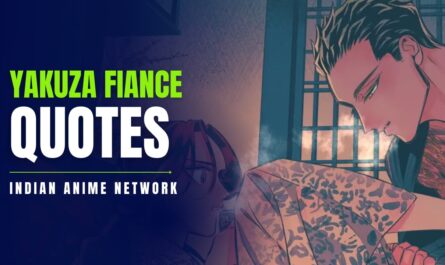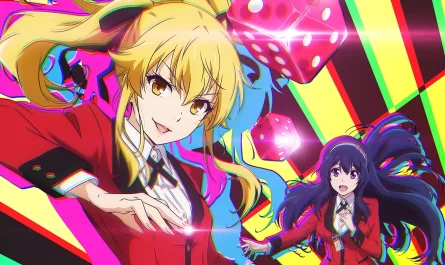Shinichiro Watanabe is renowned for his ability to blend diverse genres and unique storytelling approaches in his direction.
His works often showcase fluid pacing, with seamless transitions between action, drama, and philosophical reflections.
Watanabe’s mastery lies in crafting atmospheric settings that complement the narrative, utilizing music to enhance emotions and immerse viewers in the world.
His attention to character depth and nuanced dialogue adds layers to the storytelling, while his versatility allows him to switch effortlessly between different genres and themes, creating a distinct directorial signature.
What sets Shinichiro Watanabe’s direction apart from the broader anime industry are several distinct characteristics: all his works are original productions with episodic formats, feature recurring key staff members, and focus on traveling groups of social outcasts struggling with daily survival.
Above all, his shows emphasize blending—genres, styles, and cultures—making fusion an essential concept throughout each episodic journey.
These series act as melting pots of ideas, brimming with references and influences from movies, TV shows, music, and cultures worldwide.
Creativity takes center stage, with diverse stylistic expressions encouraged to emerge and intertwine, highlighting one of their greatest strengths.
While drawing inspiration from a wide range of styles and media is common, what makes Watanabe’s trilogy (Cowboy Bebop, Samurai Champloo, and Space Dandy) so striking is the extent to which this approach is used, almost as if it were the primary focus.
This seamless blending not only shapes the storytelling but also deepens the thematic resonance of each series.
Shinichiro Watanabe is renowned for his masterful integration of music in anime, where he serves as both director and music producer.
His eclectic soundtracks play a crucial role in enhancing the storytelling, offering a unique audio-visual experience.
Over the past two decades, Watanabe has developed a signature style that fuses Japanese and Western cultures, with sleek character designs and music inspired by diverse international artists.
The concept for his 2016 show Terror in Resonance was even inspired by his experience listening to Sigur Rós.
Watanabe’s work is often seen as ideal “gateway” anime, blending elements familiar to Western audiences into shows that are both soulful and playful.
His directorial debut, Cowboy Bebop, is a perfect example—born from a fusion of Western, sci-fi, and noir genres, alongside the musical stylings of jazz, funk, and soul.
The result is a series that embodies those influences while delivering something entirely original. In contrast, his follow-up series, Samurai Champloo, dives deeper into contemporary counterculture and a historical setting.
By framing the show through the lens of hip-hop and street style, Watanabe crafted a unique blend, differentiating it from the diverse mix of influences that defined Bebop.
Shinichiro Watanabe’s most iconic and critically acclaimed work is his solo directorial debut Cowboy Bebop (his first was as co-director on Macross Plus).
Even its title hints at the fusion that defines his style—a theme that continues through to Space Dandy. Cowboy Bebop blends a myriad of genres, from Westerns and sci-fi to noir, layered with the musical stylings of jazz, funk, and soul.
Set in a colonized star system, with humanity having mostly abandoned a desolate Earth, it explores a future that still bears echoes of familiar places—like the asteroid named Tijuana, where the first episode, “Asteroid Blues,” unfolds.
Through a series of mostly self-contained stories, the show gradually reveals the pasts of its main cast, building a melancholic atmosphere beneath the adventure.
Cowboy Bebop is a masterclass in homage, referencing everything from heroic bloodshed films and Taoist philosophy to Bruce Lee’s martial arts and the actor Yusaku Matsuda, all reflected in Spike Spiegel’s character design.
The opening theme, “Tank!,” serves as a high-energy gateway to Yoko Kanno’s remarkable soundtrack, blending powerful drumming, lively brass, and bold solos.
This dynamic and unpredictable spirit extends throughout the series, reflected in its visually striking storyboarding and loosely structured, episodic narrative, where the characters navigate life’s unpredictable challenges.
In contrast, Watanabe’s follow-up, Samurai Champloo, leans into a more distinct duality, blending historical Edo Japan with contemporary hip-hop and street culture.
The show tells the story of the mismatched trio—Mugen, Jin, and Fuu—on a journey to find the mysterious “samurai who smells of sunflowers.”
Modern slang, breakdance-inspired fight scenes, and an instrumental hip-hop score by Nujabes and Forces of Nature create a unique and energetic fusion.
From the first episode, which mirrors the transitions of a scratched record, Samurai Champloo juxtaposes genres and time periods in every formal element of the show.
Episodes like “The War of the Words” push this fusion to creative limits, blending Edo-era Hiroshima with the origins of graffiti, an art form tied to hip-hop.
The show even toys with history in absurd ways, such as “Baseball Blues,” where Mugen, Jin, Fuu, and a ragtag group play a deadly baseball game against an American team led by figures modeled after historical figures Alexander Cartwright and Matthew C. Perry.
Watanabe took his love of blending genres to the extreme with Space Dandy in 2014, a wild and absurd show that balances on the opposite end of the spectrum from Bebop and Champloo.
Where Bebop’s opening was effortlessly cool, Space Dandy leans into self-aware absurdity, with every episode prefaced by the tongue-in-cheek line, “These are the adventures of Space Dandy and his daring space crew… in space.”
The show embraces the ridiculousness of its premise, with a lecherous alien hunter who’s bad at his job at its center. With no overarching narrative, it takes an anthology approach, allowing for maximum creative freedom.
Each episode reflects the distinct style of different collaborators, blending silliness with moments of melancholic beauty.
Though music remains a common thread in Watanabe’s works, the true connection lies in their approach to blending cultures and genres.
Cowboy Bebop explores themes of accepting and learning from your past, Samurai Champloo celebrates rebellion and counterculture, and Space Dandy teaches us to enjoy the ride.
Each series, with its own distinct message and craft, stands as a testament to Watanabe’s limitless creativity and his ability to weave complex narratives through experimental fusions of style.
Space Dandy also riffs on anime culture itself, notably in an episode where alternate universe Dandys appear as parodies of iconic protagonists from shows like Dragon Ball and Mobile Suit Gundam.
The soundtrack this time takes a vibrant turn, drawing from disco and electronica, and occasionally delving into experimental sounds during its more surreal and unsettling episodes.
In addition to his directorial projects, Watanabe has made a significant mark as a music director in anime, with notable works including Michiko & Hatchin (2008), Lupin the Third: The Woman Called Fujiko Mine (2012), Mind Game (2004), and Sonny Boy (2021)
10. Lazarus (2025):
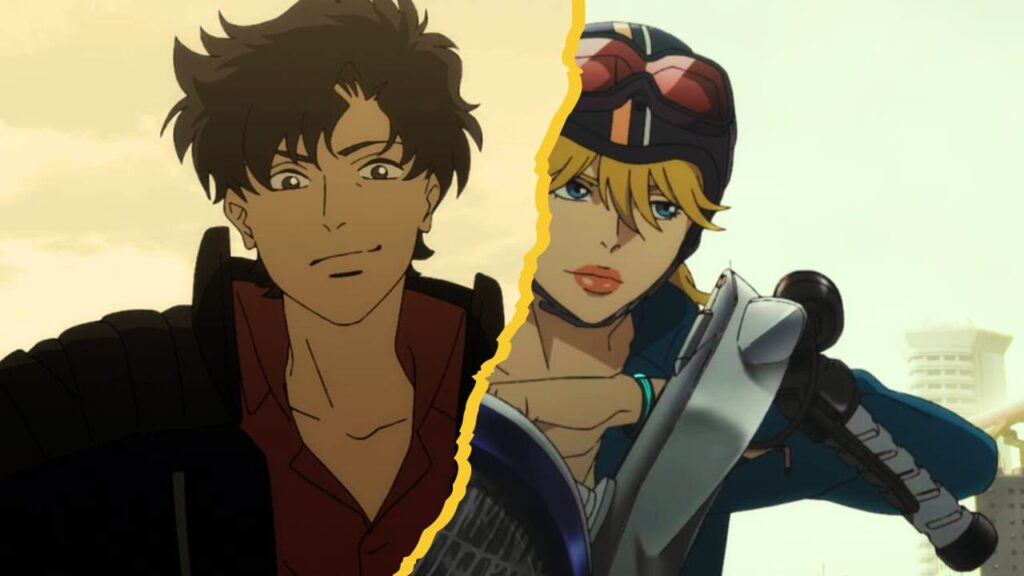
The anime is set to premiere in 2025 & is being produced by MAPPA, the animation powerhouse behind Attack on Titan: The Final Season, Jujutsu Kaisen and more.
Unlike many anime, Lazarus is not based on a manga or light novel, making it an entirely original creation
Set in 2052, the world appears to be a utopia thanks to a drug called Hapuna, but things take a dark turn when it’s revealed the drug will kill its users three years after administration.
Dr. Skinner The scientist who developed Hapuna is being hunted by a group of elite agents to create a vaccine for humanity’s last chance of survival.
In a world where humanity is on the brink of collapse, the narrative seems to focus on Lazarus’ struggle for freedom against oppressive forces.
The sci-fi setting promises deep explorations of technology’s impact on human life, mixing intense action with philosophical undertones, a hallmark of Watanabe’s works.
The anime will consist of 13 episodes, blending Watanabe’s signature style with a new, more contemporary sci-fi backdrop.
The anime’s name is inspired by Lazarus, a biblical figure resurrected by Jesus, hinting at themes of rebirth and salvation
Known for designing characters in Banana Fish and Fruits Basket, Akemi Hayashi is the main character designer of Lazarus.
Chad Stahelski, director of the John Wick series, is responsible for choreographing the action scenes, blending anime with Hollywood-style action
The anime will air on Adult Swim’s Toonami, continuing the network’s tradition of broadcasting cutting-edge anime
The collaboration with MAPPA and the involvement of high-profile names, such as Chad Stahelski for action choreography, indicates Watanabe’s vision will not just be about narrative, but also about delivering visually stunning sequences, in line with his history of stylistically groundbreaking works.
9. Blade Runner Black Out 2022 (2017):
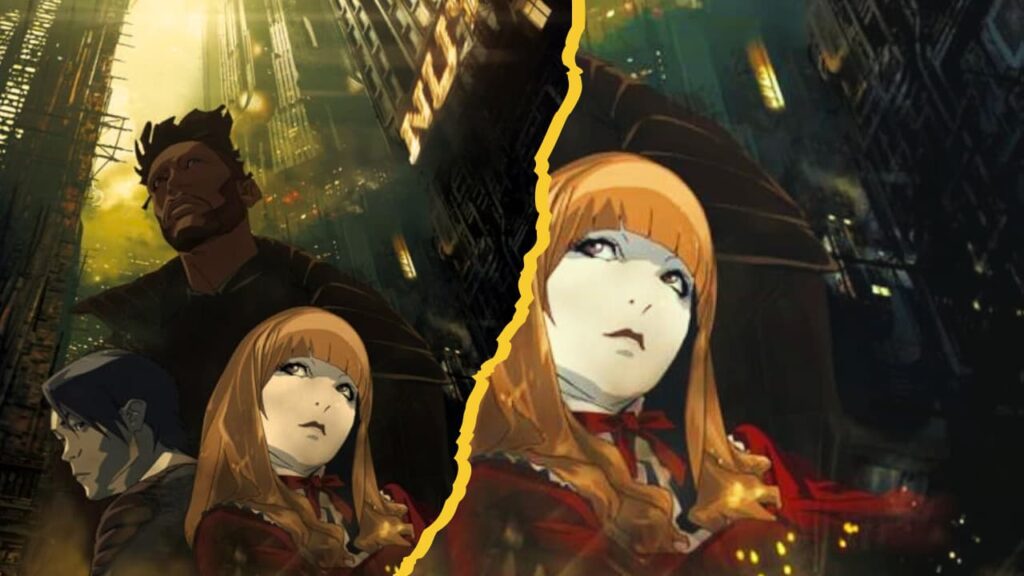
Blade Runner Black Out 2022 is a short anime film that acts as a prequel to Blade Runner 2049, bridging the gap between the original Blade Runner (1982) and its sequel.
The film is set three years after the events of Blade Runner (2019) and twenty-seven years before Blade Runner 2049, during a period of significant social unrest between humans and replicants.
The plot revolves around a massive electromagnetic pulse (EMP) attack that causes a worldwide blackout, erasing all digital data and plunging Earth into chaos.
This event is referred to as “The Blackout.” The blackout event is a significant historical moment in Blade Runner 2049, explaining the loss of digital records and the collapse of the Tyrell Corporation.
This is the first official anime set in the Blade Runner universe, marking a significant expansion of the franchise into different mediums.
Watanabe drew inspiration from classic cyberpunk anime like Akira (1988) and Ghost in the Shell (1995) for the animation style and themes, blending those influences with the Blade Runner aesthetic.
The film features hand-drawn animation, a technique Watanabe insisted on using to give it a nostalgic, detailed feel, which aligns with the aesthetic of the original Blade Runner.
The anime has a runtime of only 15 minutes, yet it packs a significant amount of world-building and narrative depth, effectively expanding the Blade Runner lore in a brief format.
The film explores themes of resistance and the fight for freedom.The short film reintroduces replicants, who had been banned after the events of Blade Runner.
The story especially focuses on replicants Iggy and Trixie, who rebel against their oppression by humans, leading to the blackout event which allows for the rise of a new generation of replicants, which becomes central to the plot of Blade Runner 2049.
The replicants in the film are of the Nexus-8 model, a more advanced generation than the Nexus-6 models from the original Blade Runner, with the crucial difference being their extended lifespans.
The anime was released as part of a series of short films intended to provide backstory for the events leading up to Blade Runner 2049, along with 2036: Nexus Dawn and 2048: Nowhere to Run.
The music was composed by electronic artist Flying Lotus, adding a modern, atmospheric sound that fits within the moody, dystopian universe of Blade Runner.
8. The Animatrix (2003)(OVA):

A Detective Story is one of the nine animated shorts in The Animatrix, a collection of stories set in the universe of The Matrix films.
Watanabe directed two of these shorts, with A Detective Story offering a noir-inspired take on the world of The Matrix.
The short pays homage to classic film noir, featuring a hardboiled detective, Ash, who investigates the mysterious Trinity.
The black-and-white aesthetic, trench coat-wearing protagonist, and moody atmosphere all draw from 1940s and 1950s noir films, a genre Watanabe often nods to in his works.
Watanabe skillfully merges the cyberpunk elements of The Matrix with traditional noir detective tropes.
The story blends futuristic technology, such as digital interfaces and AI, with old-school detective motifs like typewriters and rotary phones, giving it a retro-futuristic feel.
The short features Trinity, a key character from The Matrix films, voiced by Carrie-Anne Moss, reprising her role.
Although Keanu Reeves’ Neo does not appear, the mystery around finding “the one” is central to the story, linking it directly to the Matrix film plot.
The animation in A Detective Story stands out for its combination of noir shadows and glitchy, surreal effects that hint at the nature of the Matrix itself.
This visual fusion amplifies the sense of paranoia and disillusionment central to the short’s atmosphere.
While set in the Matrix universe, A Detective Story functions as a standalone film with its own self-contained narrative. Its noir detective format and ambiguous ending leave viewers with a classic sense of mystery and intrigue.
For this project Watanabe uses a monochromatic, washed-out palette that evokes a film noir feel while simultaneously drawing attention to the dystopian tone of The Matrix.
His meticulous attention to visual detail—sharp angles, long shadows, and the rain-soaked cityscapes—heightens the tension and paranoia that envelops Ash as he navigates the investigation.
The film’s visual style becomes a storytelling device in itself, conveying the weariness and mystery of the detective’s journey.
Watanabe’s signature use of music plays a crucial role in the anime’s atmosphere. The combination of jazz and electronic music enhances the film’s noir feel, while the ambient tracks create tension and intrigue, syncing perfectly with the narrative.
His understanding of how music can influence the viewer’s emotional connection is a hallmark of his directorial style.
In sum, Watanabe’s contribution to A Detective Story lies in his ability to take familiar themes and genres and weave them into a distinctive narrative that fits within a larger franchise while still standing apart as a unique story.
7. Macross Plus (1994):
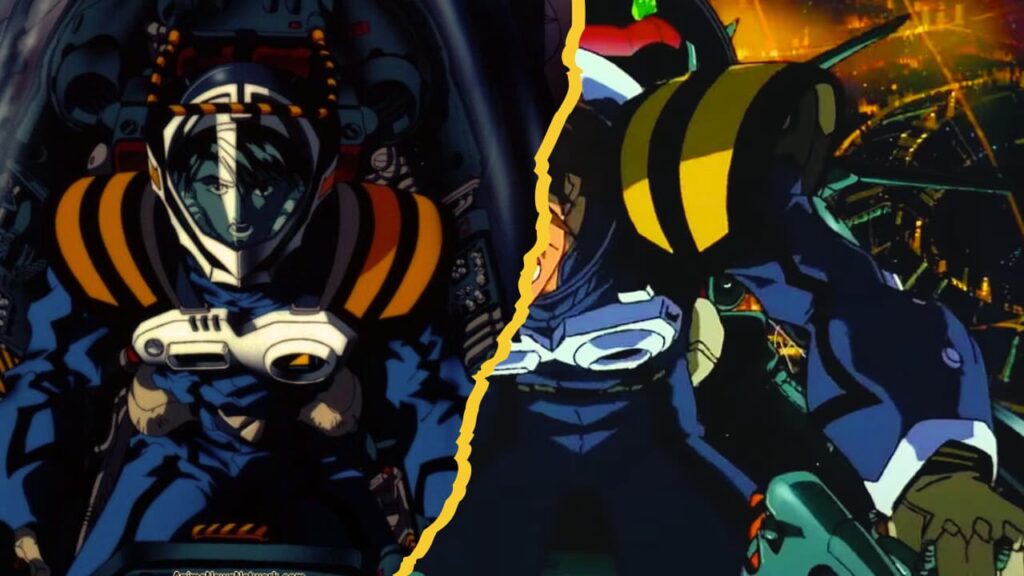
Macross Plus is a household name in mecha anime world. The OVA was co-directed by Shoji Kawamori, the creator of the Macross franchise & Shinichiro Watanabe.
As the co-director alongside Shoji Kawamori, Watanabe brought his distinctive storytelling style to the OVA series, focusing heavily on character development, emotional depth, and interpersonal conflict, elements that would become hallmarks of his later works like Cowboy Bebop and Samurai Champloo.
The story reflects themes of conflict between emotion and technology.
The AI pop star Sharon Apple embodies the future of entertainment but lacks genuine emotion, while the human characters, including Isamu, wrestle with personal desires and past traumas.
The main character, Isamu Dyson, was inspired by real-life test pilots. Kawamori wanted to explore the psychology of pilots who push boundaries for the thrill of flying, paralleling the technological advancements of the futuristic mecha they piloted.
Macross Plus was one of the first anime series to incorporate CGI (Computer-Generated Imagery) for mecha scenes, a pioneering move at the time.
The famous aerial dogfights featured impressive CGI, blending it with traditional 2D animation, which set a new standard in anime production.
The mecha designs in Macross Plus are some of the most advanced in the Macross series.
The central rivalry between the YF-19 and YF-21 test fighters is iconic, representing not only technological advancements but also the intense personal conflict between the two pilots.
The aerial dogfights and test-pilot rivalry in Macross Plus are believed to have drawn inspiration from Top Gun (1986), especially in the way the characters’ personal struggles and their ability to fly are intertwined.
This also aligns with director Kawamori’s fascination with aviation.
Macross Plus was originally released as a four-episode OVA but was later re-edited into a movie for theatrical release. The film version had some scenes extended and rearranged, giving a different pacing and feel.
Shoji Kawamori is best known for his revolutionary work in the Macross franchise, beginning with Super Dimension Fortress Macross (1982), where he combined epic space battles with themes of love and music.
He co-directed Macross Plus (1994), a groundbreaking OVA that used early CGI technology, and created The Vision of Escaflowne (1996), blending mecha with fantasy and romance.
Kawamori’s influence extended beyond anime with his contributions to Transformers (1984). His later works, such as Aquarion (2005) and Earth Maiden Arjuna (2001), explored spiritual and philosophical themes, showcasing his versatility in weaving complex narratives.
The music for Macross Plus was composed by Yoko Kanno, one of the most influential composers in anime history. Her innovative blend of electronic music, orchestral elements, and global influences added depth to the sci-fi atmosphere.
Alongside her work on Macross Plus (1994), Yoko Kanno has composed the soundtracks for other renowned anime series such as Cowboy Bebop (1998), where her jazz-inspired score became iconic; Ghost in the Shell: Stand Alone Complex (2002), which featured a mix of electronic and orchestral music suited for its cyberpunk themes; and Wolf’s Rain (2003).
6. Carole & Tuesday (2019):
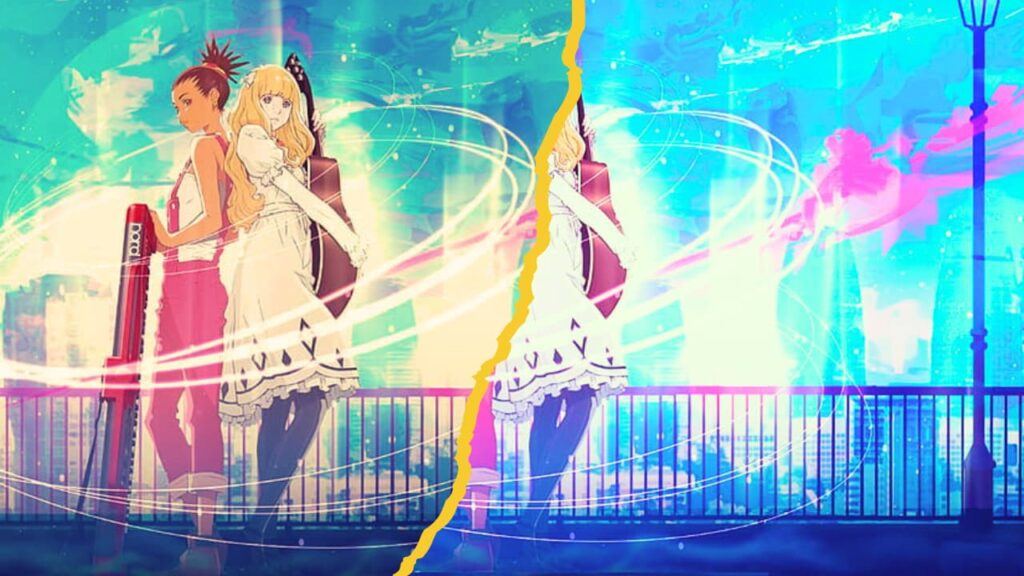
Carole & Tuesday was produced to commemorate the 20th anniversary of Studio Bones, known for other popular anime like Fullmetal Alchemist, My Hero Academia & many more.
Watanabe returned to music-focused storytelling after Kids on the Slope and Cowboy Bebop, making it one of his most music-centric works.
The anime takes place in the future on a terraformed Mars, blending sci-fi elements with real-world themes in anime like AI and the music industry.
The story revolves around two girls, Carole and Tuesday, who dream of making it big in the music world without relying on AI, which has taken over most creative fields.
The anime features a music competition show called Mars Brightest, which mirrors real-world talent competitions like American Idol and The Voice.
The plot of two musicians trying to make it in a world against them, often struggling and failing, mirrors the plot of the iconic musical comedy film The Blues Brothers.
The show touches on political themes, particularly in its second half, involving Tuesday’s mother, Valerie Simmons, who runs for president on an anti-immigration platform.
The show explores the increasing role of AI in art and creativity, with most of the music industry on Mars controlled by AI. Carole and Tuesday’s refusal to use AI reflects a desire for human expression in art.
Unlike most anime, the speaking voices and singing voices of the characters are performed by different people. Carole’s singing voice is Nai Br.XX, and Tuesday’s is Celeina Ann.
The cast of characters is racially and culturally diverse, reflecting the globalized setting of a future Mars. Carole, for example, is an orphaned refugee with African heritage, while Tuesday comes from a wealthy family.
Many characters in the show, including the judges in Mars Brightest, are designed to resemble or reference famous musicians like David Bowie, Björk, and Prince.
The character designs were created by manga artist Eisaku Kubonouchi, giving the show a distinct, fresh visual style.
Carole & Tuesday was one of the early anime series released directly on Netflix, making it accessible to a worldwide audience shortly after its premiere.
5. Terror in Resonance (2014):
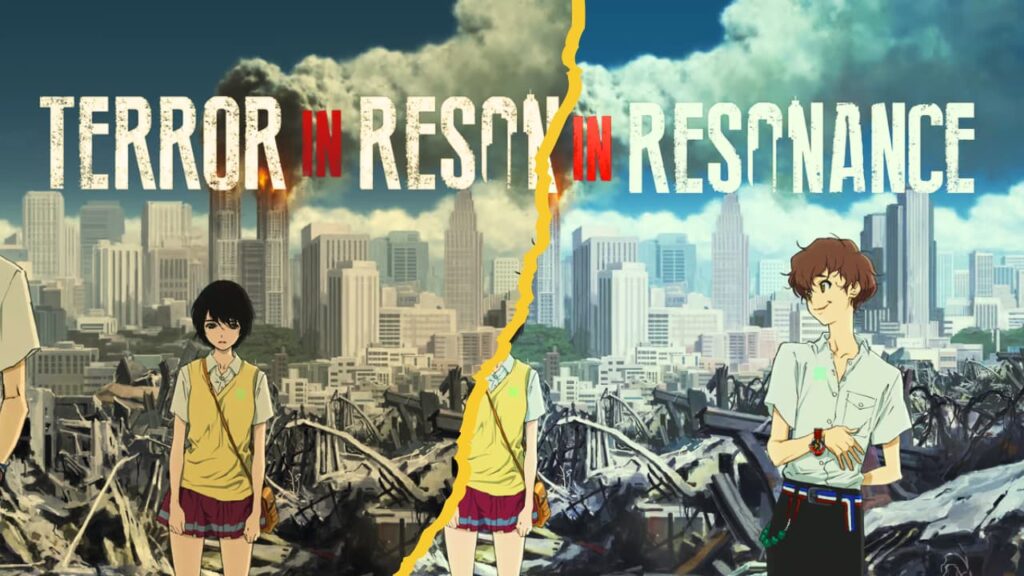
Watanabe took a risk with Terror in Resonance, diverging from his signature blend of action and humor seen in series like Cowboy Bebop and Samurai Champloo.
Here, he crafted a more somber, politically charged narrative focusing on terrorism, societal alienation, and governmental corruption.
His ability to create tension and weave together psychological and emotional layers played a pivotal role in the show’s atmosphere, making it more than just a thriller—it became a meditation on the effects of trauma and the cost of violence.
In Terror in Resonance, he avoided painting the protagonists, Nine and Twelve, as traditional heroes or villains. Instead, he explored their complex motives and internal struggles, which stem from their traumatic pasts.
This ambiguous portrayal of terrorism as a means of exposing government corruption and seeking justice is deeply tied to Watanabe’s narrative sensibility, which often rejects clear moral binaries.
Watanabe introduced layers of symbolism and intellectual depth to the story by referencing mythological and philosophical concepts.
The use of the “Sphinx” as Nine and Twelve’s code name, and their riddles as part of their attacks, draws on Greek mythology and the idea of unraveling hidden truths.
Watanabe imbued Terror in Resonance with themes of distrust in authority, critiques of government secrecy, and the alienation of youth.
Drawing inspiration from both contemporary post-9/11 anxieties and historical fears of government surveillance, he used the show as a medium to address larger issues like the dangers of unchecked power, state manipulation, and the consequences of abandoning marginalized people.
Watanabe’s ability to subtly incorporate political undertones while keeping the story personal is one of his strongest contributions to the series.
Nine and Twelve, the protagonists, are not simply terrorists; they are portrayed as victims of a brutal experiment and societal neglect.
Nine and Twelve, are survivors of a secret government experiment called the “Athena Plan,” designed to create child geniuses but which instead resulted in trauma and loss.
Nine, Twelve, and Five—all victims of the same government project—are depicted as deeply scarred individuals who grapple with their pain in different ways.
The series also explores the theme of alienation, especially through Lisa, who is isolated and bullied in her school life.
Watanabe’s interest in how individuals cope with societal rejection and emotional scars is a central aspect of the series, turning it into a psychological exploration of grief and loss.
Watanabe ensured that their motivations were deeply personal, rooted in pain, rather than political ideology. Their actions, while morally questionable, are driven by a desire for justice and recognition in a world that discarded them.
Lisa Mishima, too, becomes a symbol of ordinary people swept into extraordinary, dangerous circumstances, echoing Watanabe’s interest in the psychological trauma of the overlooked.
Watanabe once again teamed up with composer Yoko Kanno, with whom he worked on Cowboy Bebop and Kids on the Slope.
Kanno’s haunting, melancholic soundtrack for Terror in Resonance perfectly complemented the mood Watanabe aimed to create—tense, tragic, and atmospheric.
4. Space Dandy (2014):
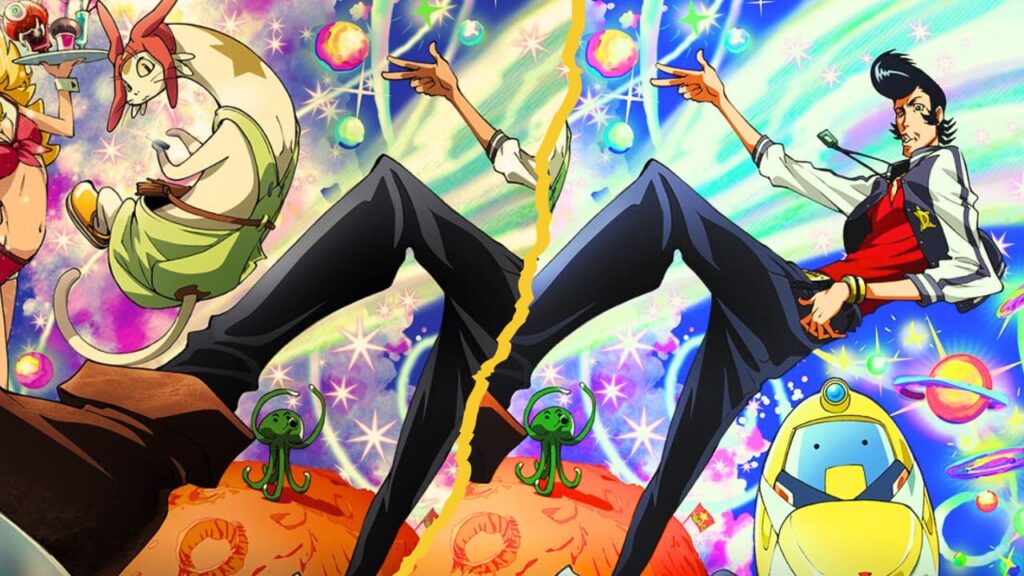
Space Dandy is a sci-fi comedy series that blends various genres, from action to absurdist humor, philosophical themes, and even musical anime elements.
Known for serious works like Cowboy Bebop and Samurai Champloo, Watanabe took a much more experimental and comedic approach with Space Dandy, pushing creative boundaries in anime.
The show takes inspiration from American sci-fi, particularly Star Trek and Flash Gordon, infusing a Japanese comedic twist on classic space adventure tropes.
The concept of parallel universes is central to the series, with many episodes resetting reality, giving the creators freedom to kill off or change the characters without long-term consequences.
The anime involved numerous guest directors, each bringing their own unique style to individual episodes. Directors like Masaaki Yuasa (Devilman Crybaby) contributed to the visual diversity.
The show follows the misadventures of Dandy, a carefree alien hunter, and his eccentric crew: QT, a vacuum-cleaner-like robot, and Meow, a cat-like alien.Dandy, a self-proclaimed alien hunter is tasked with finding and registering rare alien species for a reward.
However, Dandy’s careless and often comically misguided attempts at this job usually lead to chaotic misadventures.
A subplot running in the background of the series involves a mysterious intergalactic war between the Gogol Empire and the Jaicro Empire.
Although Dandy is unaware of it, the Gogol Empire’s leader, Dr. Gel, is constantly chasing Dandy, believing him to hold the key to winning the war.
Each episode of Space Dandy is largely self-contained, allowing the show to explore different worlds, styles, and tones without being bound to a single overarching plot.
The main characters are sometimes redrawn or presented in different artistic styles depending on the episode’s theme, giving the show a unique visual diversity.
Beneath the humor, Space Dandy touches on existential and philosophical questions about life, death, and the nature of the universe.
In particular, the show often reflects on the insignificance of individuals in the vastness of space and the absurdity of existence.
Despite its philosophical depth, the overall tone of the series remains irreverent and lighthearted. The story constantly balances absurd humor with moments of profound insight, a hallmark of Watanabe’s storytelling.
As a matter of fact Space Dandy was one of the first anime series to be simultaneously broadcast in Japan and the U.S., with the English dub airing on Toonami on the same day as the Japanese release.
3. Kids on the Slope (2012):
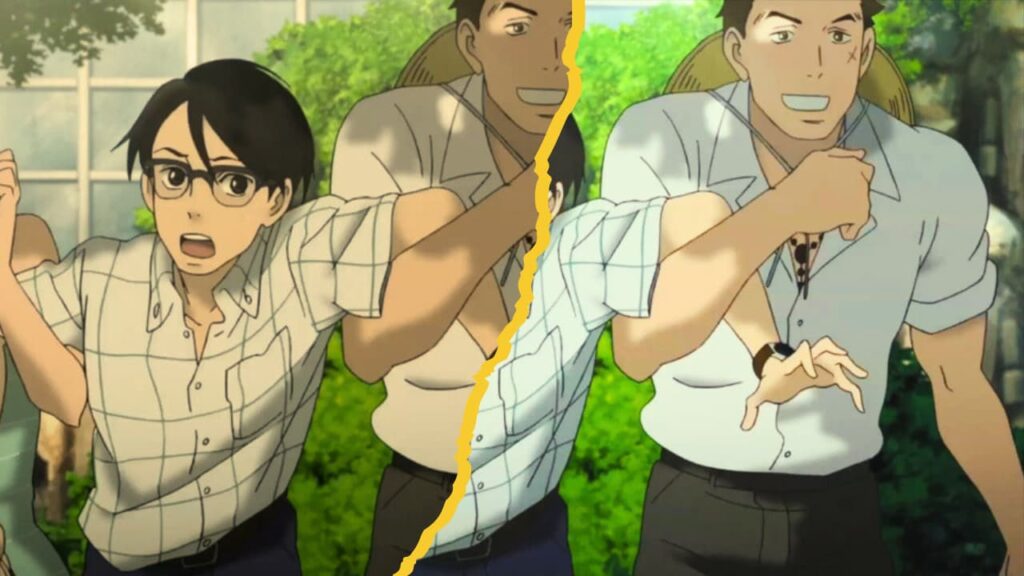
Kids on the Slope proves Shinichirō Watanabe’s versatility as a director, showing his ability to create emotionally resonant, character-driven stories outside of his usual action-packed fare.
Kids on the Slope is an adaptation of the manga by Yuki Kodama, which ran from 2007 to 2012. The anime closely follows the manga’s plot and themes of music, friendship, and coming-of-age.
Unlike his previous works like Cowboy Bebop and Samurai Champloo, Kids on the Slope marks Watanabe’s first foray into a slice-of-life, non-action-oriented genre.
The anime is set in the 1960s, specifically in Kyushu, Japan. The historical context adds depth to the narrative, reflecting the cultural shifts and tensions of the time.
Kids on the Slope portrays Japan during a time of Western cultural influence, especially in music and fashion, which is evident in the characters’ fascination with jazz—a Western genre.
The anime further elaborates on the post war cultural clash between Western influences (jazz music) and traditional Japanese values, reflecting the broader societal changes happening in Japan at the time.
The “slope” in the title metaphorically represents the characters’ personal journeys and challenges, reflecting their uphill battles in life and relationships.
The anime focuses heavily on character development, particularly the evolving friendship between Kaoru Nishimi, a classical pianist, and Sentarō Kawabuchi, a passionate drummer.
The protagonist, Kaoru, starts as a socially awkward and introverted character, but his friendship with Sentarō and his exposure to jazz help him grow emotionally and socially.
Sentarō’s bold, free-spirited nature initially intimidates him, but they bond over their shared passion for music, particularly jazz.
Sentarō’s love for jazz and his rebellious personality symbolize his rejection of societal norms, contrasting with the disciplined environment of their Catholic school.
The anime is renowned for its accurate depiction of musicians playing instruments. Watanabe and his team took great care to animate the precious finger and hand movements giving an authentic take on Jazz musicians & their artistry .
Watanabe teamed up once again with Yoko Kanno, the composer of Cowboy Bebop and Samurai Champloo.
For Kids on the Slope, Kanno created a jazz-inspired soundtrack, perfectly fitting the 1960s setting.Yoko Kanno, a jazz lover herself, brought authenticity to the soundtrack by arranging many classic jazz pieces like “Moanin’” and “But Not for Me.”
2. Samurai Champloo (2004):
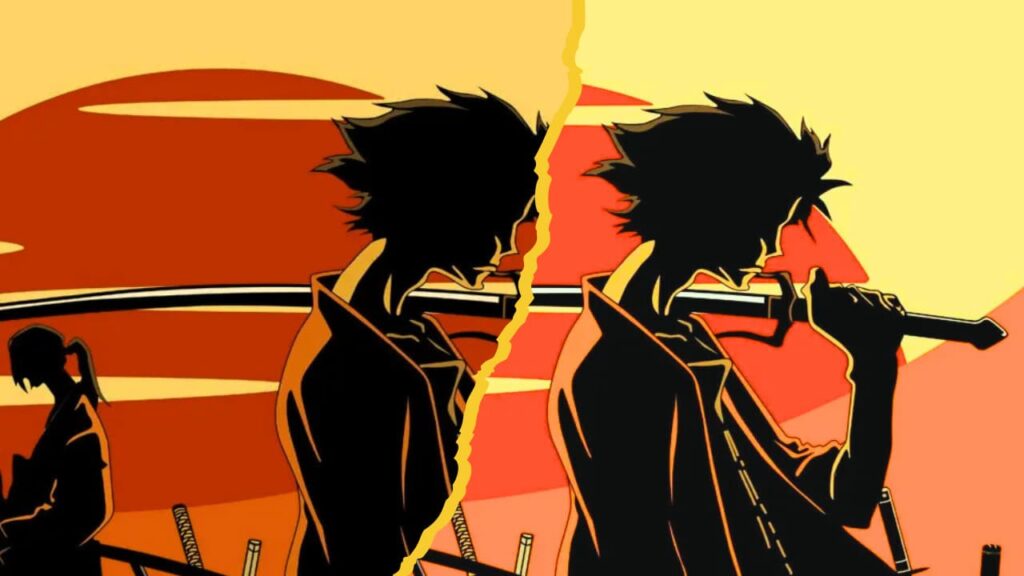
After the success of Cowboy Bebop, Samurai Champloo was Shinichirō Watanabe’s second major project.
Fans eagerly anticipated how he would blend the way of a breakdancing samurai with Edo inspired sword fights, graffiti-style title sequences, and a hip-hop soundtrack.
Although set in the Edo period (1603-1868), Samurai Champloo freely incorporates anachronisms like hip-hop music, graffiti, and DJ scratching, giving the anime a quirky, non-linear feel that defies historical accuracy.
Afterall the word Champloo is derived from the Okinawan word “champuru” means “to mix,” symbolizing the show’s blending of different time periods, cultures, and styles. This thematic mixture is reflected in the series’ visuals and narrative.
While Samurai Champloo is set in an alternate version of the Edo period, the series incorporates real historical events and figures.
For example, the episode “Misguided Miscreants” references the Shimabara Rebellion, and several other episodes mention historical figures like Miyamoto Musashi.
This blend of real history with anachronistic elements like baseball and rapping creates a fascinating contrast.
The anime contains not only a myriad of references to Japanese history and culture but also to Western pop culture.
From subtle nods to Quentin Tarantino films to characters resembling musicians like Snoop Dogg, Watanabe infuses a global sensibility into the anime.
Its fight choreography is notable for its fluidity and unpredictability, especially with Mugen’s breakdancing-inspired swordsmanship,Mugen’s fighting style is a blend of capoeira, breakdancing, and traditional swordsmanship.
This unique combination gives his movements a distinct flow, unlike any typical samurai, reflecting the anime’s contemporary cultural influences.
In contrast to Mugen, Jin’s fighting style reflects traditional samurai techniques, particularly kenjutsu (swordsmanship). His calm, disciplined approach highlights the tension between modernity and tradition, a recurring theme throughout the series.
The character Fuu, who serves as the central force guiding Mugen and Jin, has a name derived from the word for “wind” (風, pronounced “fū” in Japanese). This ties her to the series’ fluid, unpredictable narrative.
The interactions between Mugen, Jin, and Fuu are a key element in their development. Their contrasting philosophies — Mugen’s chaotic, rebellious nature vs. Jin’s stoic adherence to samurai code — are often highlighted through their exchanges.
Like Cowboy Bebop, Samurai Champloo is structured in an episodic format, with each episode functioning as a self-contained adventure.
Yet, it remains cohesive by threading Fuu’s quest to find “the samurai who smells of sunflowers” throughout the story.
Nujabes, a renowned Japanese producer, contributed significantly to the music, creating a unique fusion of traditional Japanese sounds and modern beats.
The iconic opening theme, “Battlecry” by Nujabes and Shing02, is considered one of the best anime openings of all time.
Watanabe has cited movies like Rashomon (Akira Kurosawa) and Yojimbo as key influences.
After almost two decades from the original release we can proudly say amurai Champloo has inspired a generation of anime creators to experiment with genre fusion and artistic freedom.
Its fearless mix of tradition and modernity continues to influence anime and even Western media, proving that cross-cultural blends can create something timeless.
Samurai Champloo is easily one of the most memorable and innovative anime of the 2000s.
1. Cowboy Bebop (1998):
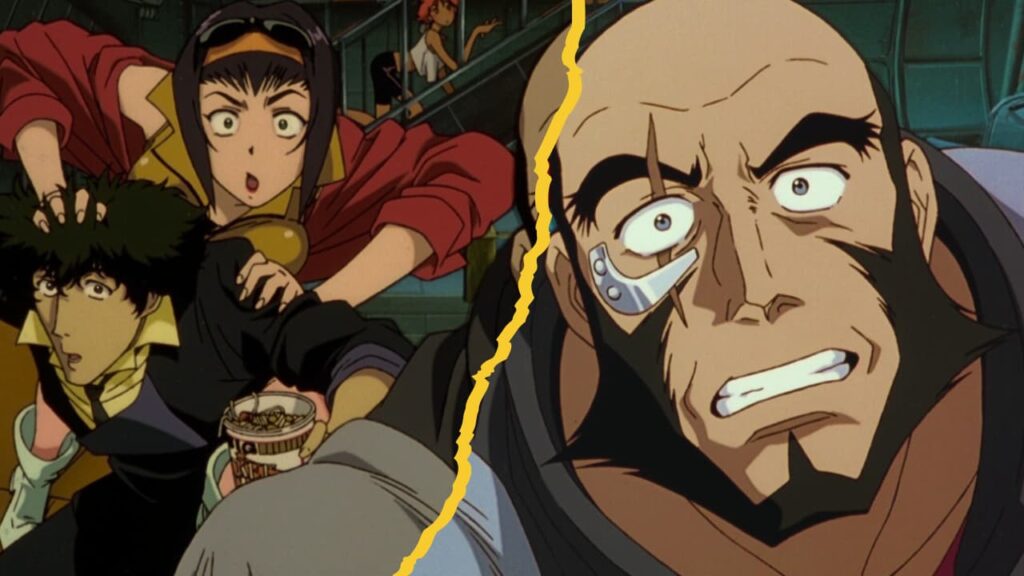
Cowboy Bebop is a love letter to western cinema. It draws inspiration from numerous films, including Westerns like The Good, the Bad, and the Ugly(1966), noir films like Chinatown(1974), and even some Bruce Lee martial arts movies.
Spike’s iconic duel with Vicious is reminiscent of classic samurai showdowns. The show also references 2001: A Space Odyssey(1968) and Alien(1979), which contribute to its blend of space noir.
As well versed as the characters already are, the origins of the characters were originally drawn & intricately designed based on the musical styles that inspired them, with each character reflecting a distinct genre.
Spike Spiegel embodies the improvisational, unpredictable nature of bebop jazz, with his fluid movements and cool demeanor.
Jet Black’s grounded, stoic design mirrors the melancholic tones of the blues, while Faye Valentine’s flashy, alluring appearance channels the bold energy of big band and pop music.
Ed’s eccentric, unpredictable nature is a visual reflection of avant-garde and experimental music, perfectly capturing her quirky, free-spirited personality.
Shinichiro Watanabe’s contribution to Cowboy Bebop is nothing short of revolutionary, as he seamlessly blended genres, artistic influences, and existential themes into a single groundbreaking series.
Serving as the director, Watanabe shaped Cowboy Bebop into a space opera unlike any other, fusing Western, noir, and jazz influences with a futuristic sci-fi narrative.
His vision went beyond the usual bounds of anime, infusing each episode with unique cinematic qualities that echoed classic films, spaghetti Westerns, and samurai dramas.
The show’s final episode, “The Real Folk Blues (Part 2),” is often hailed as one of the most powerful and ambiguous endings in anime history.
Watanabe intentionally left the conclusion open to interpretation, which has kept fans debating the fate of Spike Spiegel for decades.
This show’s music is also composed by Yoko Kanno and performed by her band, The Seatbelts, is one of its most iconic features. The soundtrack, primarily jazz and blues, significantly shaped the series’ mood.
The opening theme “Tank!” is considered one of the best anime intros ever.
Despite being regarded as one of the greatest anime of all time, Cowboy Bebop initially struggled to find its footing in Japan.
When it premiered in 1998, the series faced numerous hurdles. Its broadcast schedule was inconsistent, often relegated to late-night slots, limiting its exposure to mainstream audiences.
During its original network TV run in Japan, Cowboy Bebop got canceled halfway through the series due to its depiction of violence and sexuality.
The initial broadcast only aired 13 of Cowboy Bebop’s 26 episodes with the finale concluding with a message by the creators, “ “This is not the end. You’ll see the real Cowboy Bebop someday”.
The show’s eclectic genre fusion — blending noir, Western, and science fiction — was unconventional for its time, and this innovation didn’t immediately resonate with Japanese viewers.
Luckily, the creators were able to make good on the promise of return; while the series did not return to broadcast on cable TV, a satellite network called WOWOW picked it up almost immediately.
Furthermore through its original air in America started on September 2, 2001 a terrorist attack brought down the World Trade Center in New York City nine days later(9/11).
This incident significantly diminished America’s tolerance for media depicting acts of terrorism.
In response to the national unease, Adult Swim opted to skip the 22nd episode of Cowboy Bebop (“Cowboy Funk”), which features a terrorist planting bombs in teddy bears to blow up buildings.
Cowboy Bebop’s mature themes and philosophical undertones set it apart from the lighter, more fantastical anime popular during that era.
These factors contributed to its lukewarm reception in its home country. However, internationally, particularly in the United States, the series found a much more receptive audience.
Its unique blend of style, complex characters, and deep storytelling struck a chord with Western viewers, earning widespread critical acclaim.
The show’s success abroad eventually led to a renewed appreciation for Cowboy Bebop in Japan, solidifying its legacy.
Even in 2007, Cowboy Bebop became the first anime series to be inducted into the Hall of Fame at the American Anime Awards, solidifying its status as a groundbreaking anime in the West.

